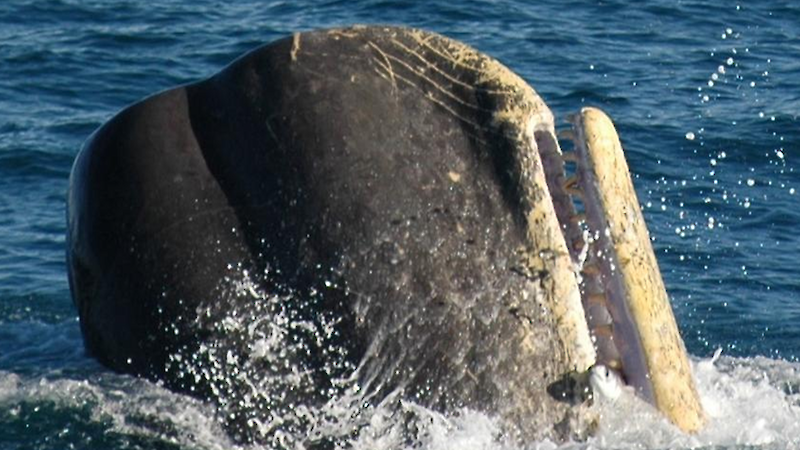A passive listening device, recording whale calls and other underwater sounds off Heard Island, has provided insights into the Southern Ocean soundscape, and allowed scientists to estimate the size of sperm whales in the area.
The study, led by Australian Antarctic Program scientists Dr Cara Masere and Dr Brian Miller, was the first time an acoustic recorder, moored to the seafloor, was deployed for a long-term survey of marine mammals in the region.
[Listen to some of the sounds below]

The mooring was designed and made at the Australian Antarctic Division and was deployed from an Austral Fisheries longline vessel in the Heard Island and McDonald Islands toothfish fishery.
"Over seven months we captured more than 4700 hours of underwater sounds, including seals, Antarctic blue whales, the most southerly recording of pygmy blue whales, and the first recordings of fin and Antarctic minke whales in the region," Dr Masere said.
"We also captured hundreds of hours of sperm whale calls."
Dr Miller said sperm whales make loud echolocation clicks and 'creak vocalisations', that are associated with different behaviours, but which also contain information about the size of the individuals making the sounds.
"Our recordings suggested that the sperm whales off Heard Island were large males, and showed that they were present in the area every day from late January through to March," he said.
Sperm whales usually make echolocation clicks when they're foraging, with about one click per second over an average 40 minute dive.
The interval between each click, or 'inter-pulse-interval', is related to the size of the whale's head, which is in turn related to the length of the whale.
"If our recordings are long enough, we can tell what a sperm whale is doing from the types of clicks," Dr Miller said.
"We can also estimate its size, and potentially the number of individuals in the recording."
The team analysed 719 hours of sperm whale clicks. Measuring the inter-pulse-interval suggested that the whales were large males between 15 and 16 metres in length.
"This is consistent with whaling data that suggest sperm whales at latitudes higher than 50° are almost exclusively adult males," Dr Miller said.
The whales were also detected more often during daylight hours, especially around noon.
"The continuous daily presence of the sperm whales between January and March indicates the area is seasonally important to sperm whales, as well as a range of other species regularly detected in the area," Dr Miller said.
"Overall, our results show that fixed passive acoustic monitoring is an efficient and cost-effective means of surveying the presence and distribution of marine mammals in remote and difficult to access parts of the ocean."






